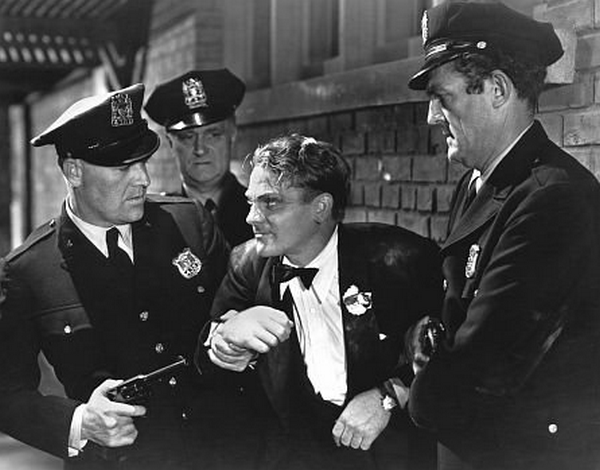Military Sidearms: Crucial Personal Defence Or Dead Weight?
Least Used Military Weapon in WW2?
There is a case that handguns were practically irrelevant to the soldiery of World War 2. Aside for an status of rank or as a crew personal defence weapon, where troops could carry a more potent small arm they would. In fact, most armies completely spurned the handgun as a standard piece of kit for the rank and file.
And yet, handguns still have a unique fascination and many armies took pride in their choice of handgun, it becoming representative of that nation's military pride. You cannot think of the British Army and it soldiers of this period and not think of the Webley, and a GI without his Colt 1911 is unimaginable.
I'm afraid I am just as much a victim to this fascination with the handgun as a piece of military regalia as most and I do have my particular favourites...
5. Colt/Smith & Wesson M1917 Revolver (USA)
Now, I know what you're going to say, 'but what about the Webley'. And, yeah, it was hard to leave the good old Webley out, but I think the classic Colt revolver doesn't get as much love as it should. So I'll highlight this instead (this time, watch out for my 'Top 5 Handguns of All Time' post).
To me, the 1917 design is a real thoroughbred classic and is - basically - the format which influences the majority of revolver designs even up to this day. It's the familiar silhouette if you think of American police revolvers (especially from 1970s movies) and 1930s gangster alike (when not totting the 1911).
The 1917 format had the distinction of being manufactured by both Colt and Smith & Wesson, so the design was dominant, especially when you consider the general format was made is a host of frame sizes and calibres.
By World War 2 the 1917 was a 'second line' sidearm, having been replaced by the Colt 1911 semi-automatic in general issue. As well as being issued to US stateside security forces and military policemen, they were used overseas by troops such as tankers and artillery personnel.
It was also used by the UK, the Home Guard and the Royal Navy used it during the Second World War as an alternative to the Webleys in the British .455 calibre.
I love the look of the elegant 1917, the 1911 was too 'showy' for me and a bit of a hoodlum's gun. A variation of the design - the Colt Police Special, which pre-dated the 1917 - was the preferred handgun of one Indiana Jones!
4. Mauser C96 - Germany
Predictable me! Everyone's' favourite 'steampunk' handgun is definitely the excellent 'Broom Handle'!
 |
| Above: A rare and historical early Mauser Model 1896 cone hammer "Porfirio Diaz" presentation pistol with a matching Stock. Gorgeous! Source: Rock Island Auction.com |
It's kinda a strange inclusion merely because of it's age, having been names after it's year of production - 1896! And yet, this reliable handgun soldiered on all the way into the Second World War. Again, Webley fans will smirk and say 'so what', but revolvers have a tried and tested longevity that saw very little innovation over a long period in basic design, semi-automatics - on the other hand - saw a lot of innovation since their widespread adoption by militaries at the turn of the twentieth century.
The Mauser C96 - therefore- was something of an anachronism by 1939 and yet was still the preferred sidearm of a select few soldiers. In a way, this may be because - with it's addition of a stock and, later, a box magazine - it was a sort of the granddaddy to what we call now the PDW (Personal Defence Weapon).
 |
| Above: Underlining it's 'bad boy' image, here a SS trooper is using his stocked Mauser C96 in it's fully automatic - sub-SMG - form. |
Popular culture tends to align the use of this gun with the 'bad guys', though Harrison Ford was the exception to this rule having used the C96 in both Indiana Jones and The Last Crusade and also in a pimped-up form as Han Solo’s DL-44 heavy blaster pistol from the Star Wars trilogy!
I like the C96 simply because it looks 'sick' - as the kids say - and because it's such a unique design. As I said, the Steampunkishness of it is uber attractive and if you asked any gun nut which was the most attractive pistol chances are that the C96 would be in their top 5, as it is with mine.
3. Welrod Silenced Pistol
For some strange reason when you ask people about the best WW2 handguns they never seem to think about the Welrod. Maybe because it was a 'specialist' covert pistol, or because it was numerically tiny in it's employment compared to the huge numbers of Webley's or Colt 1911s that were produced. In any case, it's a bit of a forgotten success story which belies it's importance.
.jpg) |
| Above: Looking more like a mechanics tool than a weapon the Welrod oozes a sinister intent and which belies it's 'home made' looks. Source: Wikipedia |
Handguns, in the modern military sense, are by and large defensive and 'secondary' weapons or are indicative of status. But the Welrod was wholly aggressive in it's intent - it had one use and one use only, to kill and enemy.
Whether it was to silence (pun intended) a enemy sentry or assassinate an enemy target, there was a cold, xxxx nature to it's existence. This, coupled with the specialist nature of it's users elevated it's real effect on the war over and above other handguns despite smaller deployment.
Studies show that in actual use the handgun was - despite it's numbers in WW2 - was hardly used. 'One of the major challenges for the US Army's attempts to figure out what they wanted from future pistols coming out of WW1 was finding enough confirmed uses of pistols in combat to develop a basis for statistical research.'
On the other hand, when a Welrod was deployed there was a greater expectation of it's use. And when it was used it took out targets that had a greater effect on a mission's success - and the course of the war, even - than any of the relatively rare kills that a general issue handgun could achieve.
Whether a sentry guarding a crucial enemy installation or an enemy officer, these kills mattered in the wider sense of the war. (That's not to say that kills using a general issue pistol didn't matter, particularly when saving a soldiers life as a last ditch defensive weapon, but how many of these uses actually effected the results of a mission, campaign or the whole war?)
OK, I exaggerate a little for effect, but in essence that's the whole point of a specialist weapon like the Welrod. It's existence is partially the psychological effect (and reputation) it has as well as the statistical one. Like the British Commandos, the willingness of a nation to deploy such things is a measure of their sheer determination and this does have an effect on how the enemy perceives it.
Anyway, the Welrod was an evil looking contraption and it's sinister look only reinforced it's nefarious nature.
2. Sauer 38H
The what? It wouldn't surprise me if you ain't heard of it (unless you are a real gun nut). But most people when thinking about WW2 German 'officer pistols' tend to think of the legendary Walther PP and PPK (you can thank bloody James Bond for that). But, in fact the Walther was not the best compact of the war... The 38H was.
While the Walther get's the star role for best known small military pistol it did have it's draw backs and today is seen more of a historical bookmark than a piece of real firearms innovation that is still relevant (though it is still manufactured and sold). The Sauer 38H does not have the reputation that the Walther has though, instead what it does have is a real influence of the way handgun design evolved with reference to todays pistols.
I dare say that were today's gun user given a choice of which to carry - the Walther PP or the Sauer 38H - as a concealed carry defensive pistol, those with experience would take the Sauer! The 38H had several design features that made it a safer and more 'modern' feeling a pistol to use than it's more famous German compatriot... Here's video which explains why better than I can...
1. Browning Hi-Power
John Moses Browning - the patron saint of gun makers - once said that the Hi-Power was the Colt 1911 done right (I paraphrase, but it's close enough). While many might question why I have left out the legend that is the Colt 1911 I will simply say that's because the Hi-Power existed and was a better gun!
I cannot highlight the Hi-Power without dropping the over-used 'factoid' that it was one of the few firearms which was used by both sides during World War 2 (thanks to the German occupation of Belgium, the home nation to the FN company which was responsible for the Hi-Power's initial manufacture).
There are all sorts of reasons why the Hi-Power is at the top of my list; the classic looks, it's historic significance (it ultimately supplanted the Webley and thus brought the renowned relationship between the British Army and the Webley revolvers to an end), it's continued popularity which has seen FN reintroduce a new version despite handgun designs moving forward.
 |
| Above: The legend Sean Connery showing you the naughty end of a Hi-Power. No Walther PPK for James Bond this time! From 'A Bridge Too Far', 1977. |
But most of all - and quite simply - this is my number one choice because it's a gun that I have actually fired! Whilst undergoing a British Army induction course when nearing the end of my schooling I handled the Hi-Power on the range. I'll never forget that, as it was a hugely enjoyable and exciting event, and was intended as my introduction to joining the army full-time.
Events took a different turn, however, but I will always fondly remember this as a 'what might have been' moment in my life.







.png)
Post a Comment